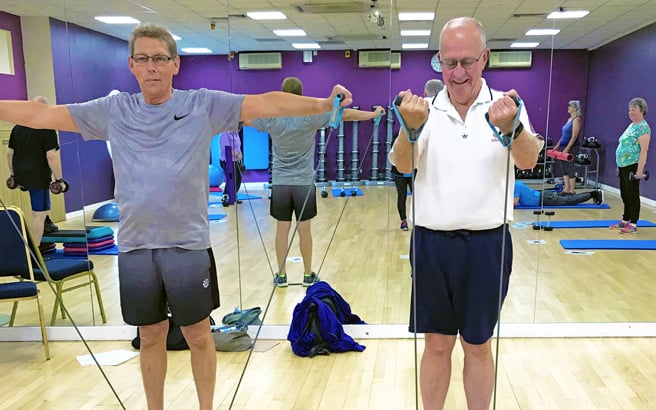 World Cancer Research Fund supporter Marion Foreman is an accredited Personal Trainer, Health Adviser and Qualified Weight Management Counsellor with 40 years of nursing experience.
World Cancer Research Fund supporter Marion Foreman is an accredited Personal Trainer, Health Adviser and Qualified Weight Management Counsellor with 40 years of nursing experience.
We know there’s growing evidence that people who are active before and after a cancer diagnosis have a better chance of survival and age is not a barrier to this.
With the support of a local charity I am able to deliver two exercise classes a week to people who are on their cancer journey. Those who would like to attend are given my contact details and we arrange to meet up. As a nurse and a personal trainer I am able to assess their fitness levels and make sure that the class is right for them.
Training at the station
We have a selection of exercises that we set out at a dozen stations. The aim is to do a minute at each station – but it’s very much the participant’s minute. When anyone first starts in the class a minute is a very long time and often it will be no more than a few seconds that they manage. One of the biggest challenges is that every other station will be a floor-based exercise, so the circuit involves lots of getting up and down off the floor. For many people (not just those who are older) this can be a struggle but it’s great to see this and all the other exercises getting easier after a few weeks.
Age itself really isn’t a barrier, the challenges faced by people affected by cancer are common for all of those in my classes. For example:
- loss of confidence
- loss of control
- fear
- pain
- lymphoedema
- isolation
- a general feeling that their body doesn’t really belong to them
By joining a tailored and supportive class people of all ages and abilities are helped to adapt the exercises to suit them and tackle so many of the things that are worrying them. And the very best thing? Everyone is in the same boat and the support is second to none, freely given with fun and laughter.
This article is from Informed, our regular newsletter for health professionals. Sign up for Informed and a host of other resources.

